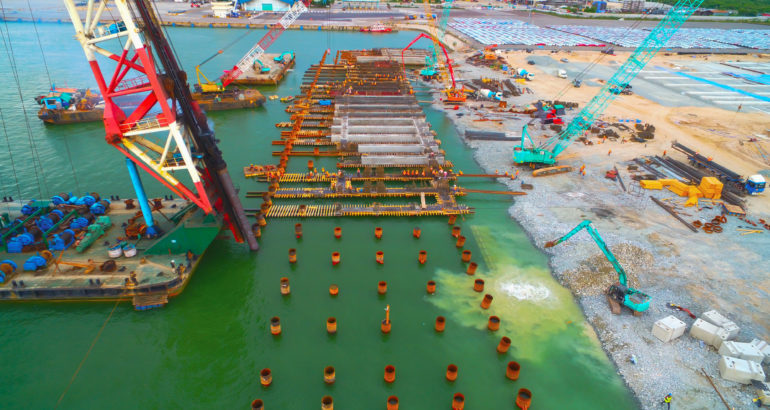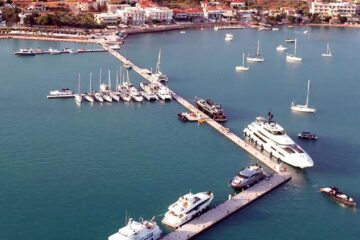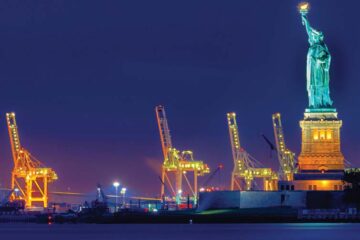The potential for an accident around marine pile driving is probably higher than for any other construction operation. The pile rig with a set of heavy leads, a 50,000 lb. Pile hammer is unwieldy enough; add a long pile and a high potential for danger exists. Add a hammer in operation with its moving parts, a 60′ steel casing swinging from a crane line, all situated on a floating barge and the need for awareness is obvious.
At a minimum, the Pile Driving Superintendent should review the Construction Safety Orders that pertain to the job. A tailgate safety meeting with the entire pile driving crew should be held to discuss the inherent dangers of performing the work before setting foot on the job site.
This guideline is to assist the supervisor on a pile-driving construction project to determine if there is an effective project plan to ensure a safe work environment throughout the job.
Here are some questions you should address before you get started:
Are there procedures in place to ensure that adequate protection is being provided to the entire crew?
Is there an accountable and responsible person to oversee project safety and health plan? Is this person capable of identifying hazards and do they have the authority to take corrective measures?
Has a Project Safety Analysis been completed before each critical stage of the project to ensure safety protocols are in place?
Is there a person in place to evaluate and monitor subcontractors to ensure they are comfortable with the project plan?
Is there a supervisor and employee training program in place to go over the Project Plan that includes operations, reporting, and safety standards?
Are there procedures for controlling hazardous operations such as cranes, barges, pile driving, and related equipment, scaffolding, trenches, confined spaces, welding, cutting and burning, hoisting and lifting and hazardous materials?
Is there documentation for training, permits, hazard reports, inspections, uncorrected hazards, incidents, and near misses in an accessible area?
Have you created a project emergency response plan?
Once These questions have been addressed, you should complete a worksite analysis
An analysis of the worksite should involve identifying existing and potential. The following measures to identify all existing and potential hazards:
- Conduct a comprehensive worksite survey for safety.
- Periodically update surveys and include employees in this effort.
- Analyze existing and future facilities, processes, materials, and equipment.
- Provide systems that allow employees to notify management about conditions that appear hazardous.
- Investigate accidents to identify their causes and create a prevention plan.
- Analyze injuries and illnesses to detect and prevent patterns.
Hazard Prevention and Control
Workplace hazards often can be eliminated by redesigning the job site or job. However, in Pile Driving, the pile contractor is generally not afforded this opportunity. As a result, the project superintendent must attempt to control any such hazardous condition to prevent unsafe and unhealthful exposure to the crew.
Employers must eliminate hazards once they are identified. To do this, a program should be established to correct or control hazards promptly. This program should include:
- Use engineering techniques where feasible and appropriate.
- Establish, at the earliest time, safe work practices and procedures that all affected parties can understand and follow. Understanding and compliance are a result of training, positive reinforcement, correction of unsafe performance, and if necessary, enforcement through a communicated disciplinary system.
- Provide personal protective equipment when engineering controls are infeasible.
- Use administrative controls, such as reducing the duration of exposure.
- Maintain the facility and equipment to prevent equipment breakdowns.
- Plan and prepare for emergencies, and conduct training and emergency drills, as needed, to ensure that proper responses to crises will be “second nature” for everyone involved.
- Establish a medical program that includes first aid onsite as well as nearby physician and emergency medical care to reduce the risk of any injury or illness that occurs.
Safety and Health Training
Training is an essential component of an adequate safety and health program.
Employee Training.
Design employee training programs to ensure all employees understand and are aware of the hazards they may be exposed and how to best avoid them.
Supervisory Training.
Train supervisors to understand the critical role they play in job site safety and to enable them to carry out their safety and health responsibilities effectively.
Safety Program
In implementing a safety and health management system, there are various ways to provide commitment and support by management and employees.
- State a worksite policy on safe and healthful work and working conditions, that documents the importance of safety and health protection in the organization.
- Establish and communicate a clear goal for the safety and health program.
- Define objectives for meeting that goal, so all members of the organization understand the results desired.
- Provide visible top management involvement in implementing the plan.
- Arrange for and encourage employee involvement in the structure and operation of the program.
- Assign and communicate responsibility for all aspects of the program so that managers, supervisors, and employees.
- Provide adequate authority and resources to responsible parties so assigned obligations can be met.
- Hold managers, supervisors, and employees accountable for meeting their responsibilities, so essential tasks will be performed.
- Review program operations at least annually to evaluate their success in meeting the goals and objectives.









